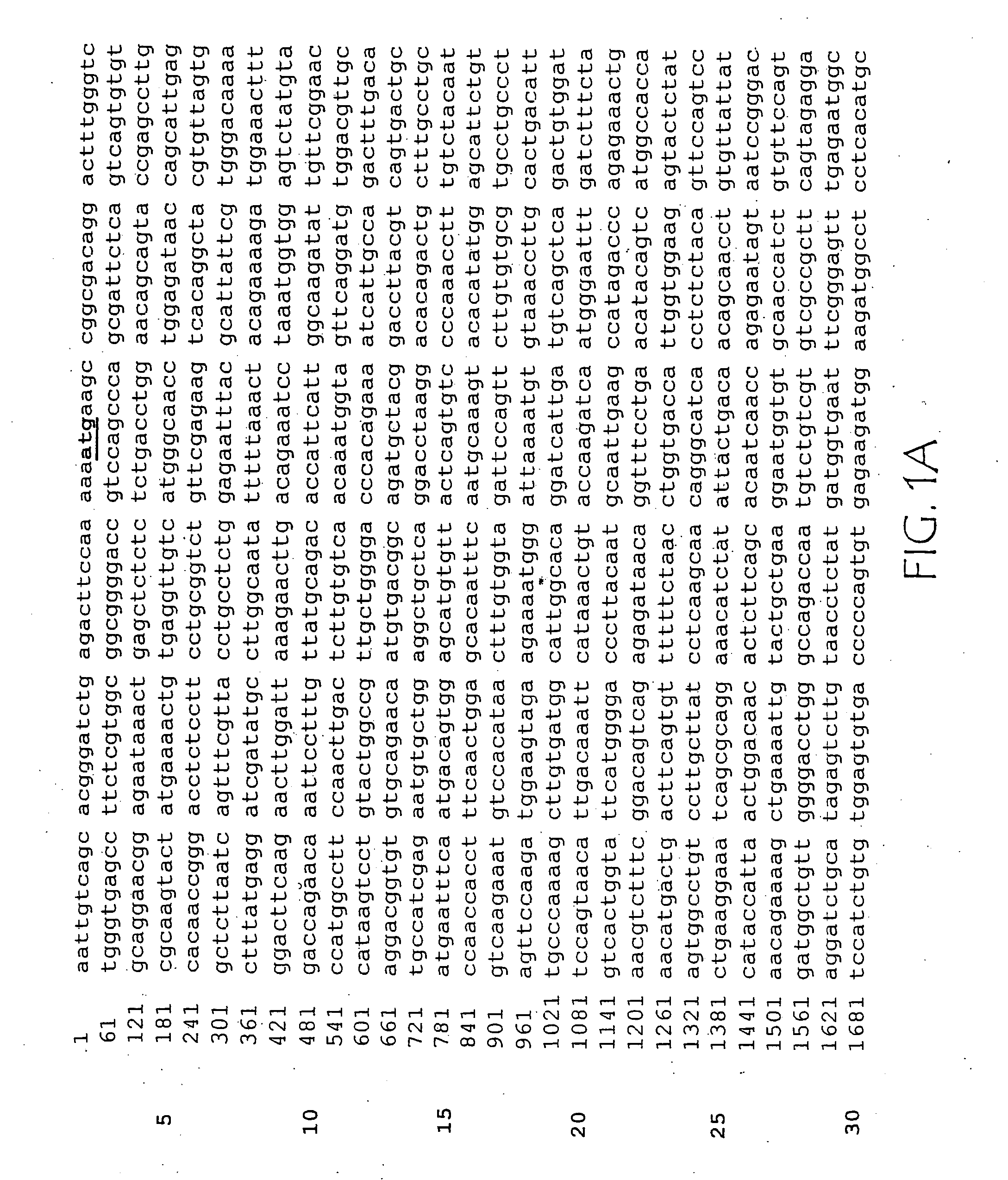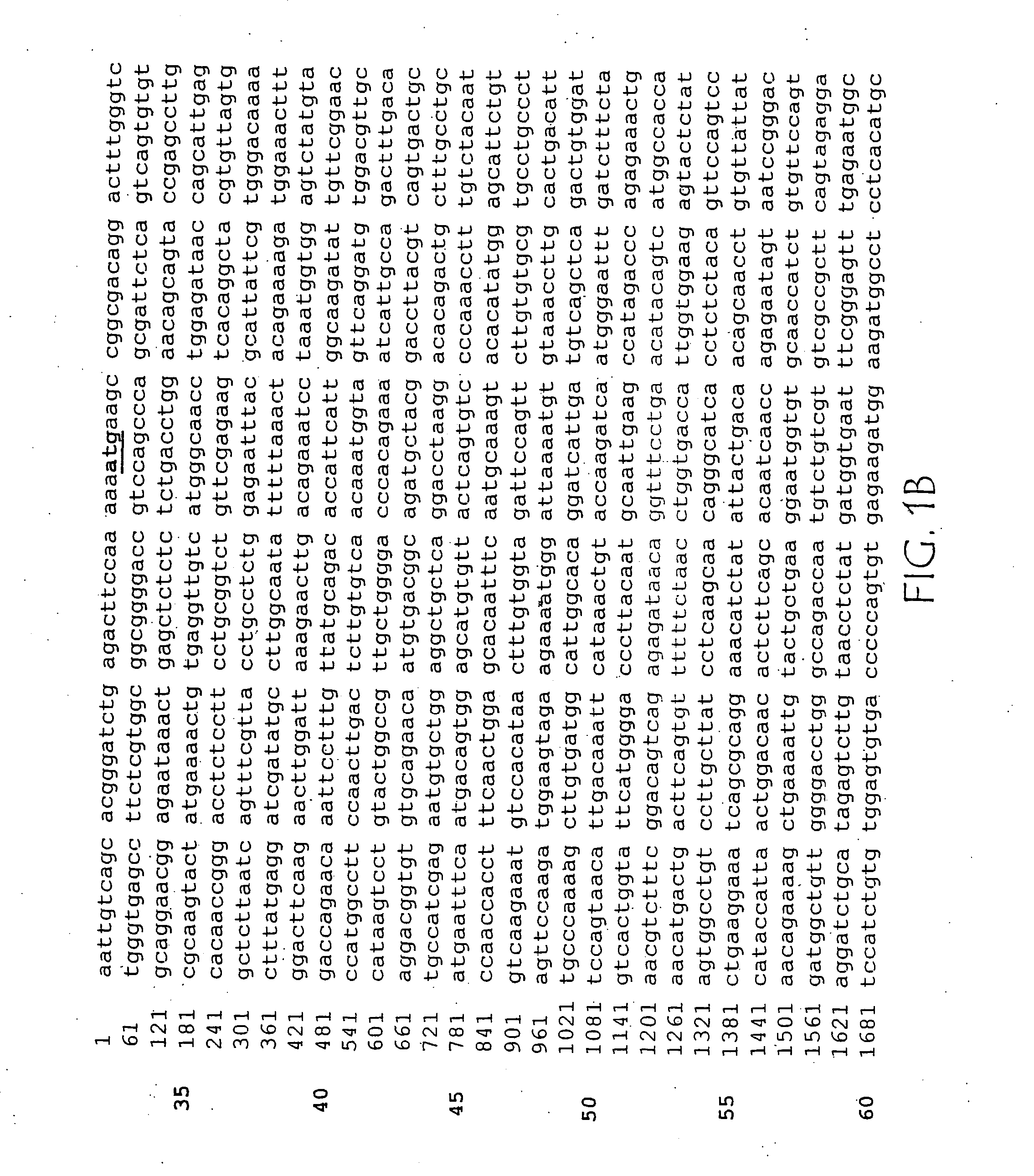ErbB4 antagonists
a technology of erbb4 and antagonists, applied in the field of erbb4 antagonists, can solve the problems of stenosis including vascular stenosis and restenosis, and achieve the effect of reducing heregulin binding and high affinity
- Summary
- Abstract
- Description
- Claims
- Application Information
AI Technical Summary
Benefits of technology
Problems solved by technology
Method used
Image
Examples
example 1
Construction, Isolation and Biochemical Characterization of Immunoadhesins and Chimeric Heteromultimer Immunoadhesins
[0225] A unique Mlu I site was engineered into a plasmid expressing human IgG heavy chain (pDR, a gift from J. Ridgeway and P. Carter, Genentech, Inc.) at the region encoding the hinge domain of the immunoglobulin. Mlu I sites were also engineered into a set of ErbB4 expression plasmids at the region encoding the ECD / TM junctions of these receptors. All mutagenesis were performed using the Kunkel method (Kunkel, T., Proc. Natl. Acad. Sci. U.S.A. 82:488 (1985)). The Mlu I sites were utilized to make the appropriate ErbB4-IgG fusion constructs. The fusion junction of the ErbB-IgG chimera was: G640ErbB4-(TR)-DKTH224VH where the amino acid numbering of the ErbB4 polypeptide is described in Plowman et al. (Plowman, G. D. et al., (1993a) PNAS USA 90:1746-1750). The conserved TR sequence is derived from the Mlu I site. The sequence of the Fc region used in the preparation o...
example 2
Effect of ErbB4-IgG Immunoadhesin on Human Aortic Smooth Muscle Cell Proliferation
[0229] Human aortic smooth muscle cells (Clonetics) were seeded at about 50% confluent density (5000 cells / well) in 96 well tissue culture plates and incubated overnight in SM2 media (Clonetics). Next day, the media was changed to M199 supplemented with ITS (1×), 2 mM L-glutamine, 50 μg / ml ascorbic acid, 26.5 mM NaHCO3, 100 U / ml penicillin, 100 U / ml streptomycin and 0.1% (v / v) fetal bovine serum. The cells were further incubated for 16 h. The cells were then treated with either Her4-IgG (400 nM) or buffer for 1 h, followed by treatment with PDGF (100 ng / ml) for 40 h. Control cells were left untreated to estimate the basal level of cell growth. An aliquot of BrdU (10 μl / well of a 10 μM solution of 5-bromo 2′-deoxyuridine prepared in PBS) was added and the cells were incubated for an additional 2 h. Cell proliferation was monitored by quantitating BrdU incorporation using BrdU ELISA (Cell proliferation k...
example 3
Effect of ErbB4-IgG Immunoadhesin on Human Aortic Smooth Muscle Cell Migration
[0231] Human aortic smooth muscle cells were trypsinized and resuspended at a concentration of 5×105 cells per ml in DME containing 10% FBS. Cells were pre-incubated with Her4-IgG (400 nM) or buffer for 15 min. The lower wells of ChemoTX chemotaxis chambers (Neuroprobe Inc., Cat 116-8) were filled with 300 μl of a solution of 2 U / ml human thrombin or buffer (PBS) negative control. A filter was mounted on top of the chamber and the smooth muscle cells (buffer or ErbB4 treated) were added to the top wells in a volume of 50 μl. The plate and filter were covered with the clear plastic lid and incubated for 3 h at 37° C. in humidified air with 5% CO2. At the end of the incubation, filters were removed and the top sides were wiped with a Q-tip to remove any remaining cells. The filters were stained with Dif-Quick staining solution and the number of cells migrated to the bottom of the filter were counted using a...
PUM
| Property | Measurement | Unit |
|---|---|---|
| pH | aaaaa | aaaaa |
| pH | aaaaa | aaaaa |
| final volume | aaaaa | aaaaa |
Abstract
Description
Claims
Application Information
 Login to View More
Login to View More - R&D
- Intellectual Property
- Life Sciences
- Materials
- Tech Scout
- Unparalleled Data Quality
- Higher Quality Content
- 60% Fewer Hallucinations
Browse by: Latest US Patents, China's latest patents, Technical Efficacy Thesaurus, Application Domain, Technology Topic, Popular Technical Reports.
© 2025 PatSnap. All rights reserved.Legal|Privacy policy|Modern Slavery Act Transparency Statement|Sitemap|About US| Contact US: help@patsnap.com



